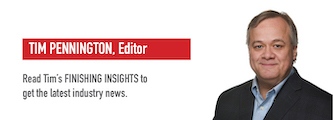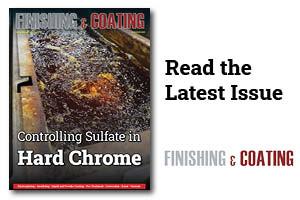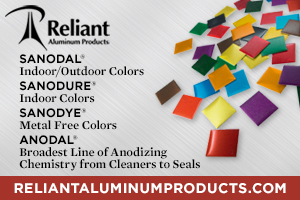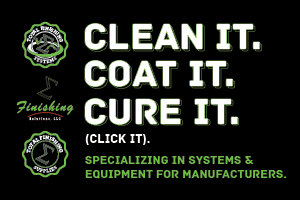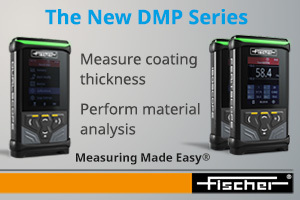The United States Environmental Protection Agency is required by law to set emissions standards for hazardous air pollutants and other air toxics as identified by the Clean Air Act.
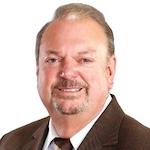 Joe McChesneySome of these chemicals commonly used in vapor degreasing applications are known carcinogens and linked to various cancers and may cause damage to the nervous system, reproductive organs, and immune system. Other effects are related to environmental concerns.
Joe McChesneySome of these chemicals commonly used in vapor degreasing applications are known carcinogens and linked to various cancers and may cause damage to the nervous system, reproductive organs, and immune system. Other effects are related to environmental concerns.
Suppose you are using solvent by choice or necessity in a vapor degreasing application. In that case, you are probably aware of the recent regulations for these solvents enacted under the Toxic Substances Control Act (TSCA). Public information is readily available from the EPA and other sources.
August 2025 Update
Over the past several years, the EPA has implemented assessments for risk evaluation when using these solvents from a health and environmental perspective.
The results have created strict regulations for continued use and/or phase-out for certain solvents due to their potential health and environmental risks under the Toxic Substances Control Act.

Rules Postponement - Restricted Uses and Phase-Out (Ban)
Most solvents that are affected by these rules will be governed under the EPA Final Rule’s publication. Manufacturing and uses will be phased out within a defined time.
The EPA has postponed some solvent enforcement time limits and provided an extension to the solvents often used in National Defense, Military, Medical, and Aerospace applications until suitable replacement solvents or alternate technologies are available. Once that occurs, the EPA plans a phase-out. Time frame unknown.
Occupational User’s Safety
Under the allowed conditions for some solvents extended use, the EPA has developed a workplace protection program, Workplace Chemical Protection Program (WCPP), that contains specific guidelines to ensure all workers are not exposed to excessive solvent emissions by defining conditions of use, mandating regular monitoring, and installing safety features on the solvent equipment and/or general area. If you are using a solvent for degreasing, we recommend you verify the latest regulations.
Future of Vapor Degreasing
Some vapor degreasing solvents are currently being banned or phased out. Some will be allowed for use for a limited period under strict regulations such as WCPP. The regulations for the manufacturing, distribution, import, and export of specific solvents are also cited in these rules.
The technical data cited by the EPA indicates that safer alternative solvents are available to replace most chlorinated, brominated, and some fluorinated solvents. Alternative cleaning technologies exist to replace vapor degreasers if the user chooses to consider that option.
These rules are in place now and were created to protect any personnel exposed to these solvents. They were developed to offer safer modern transitions. Companies that are still using chlorinated or brominated solvents, solvents that contain HFE and HFC materials, and any solvent listed by the EPA as a PFAS should review these rules regarding their existing process (equipment and solvent) to ensure compliance and consider an alternative option if required. Failure to do so may create legal risks/enforcement actions by Federal, State, or local agencies.
PFAS Update
The current administration’s EPA panel has announced changes in the scope of regulations/definition / compliance time limits for these substances. Technical discussions concerning PFAS regulations and enforcement with possible revisions to TSCA reporting are in progress.
Any degreasing solvents that contain listed PFAS substances (HFEs/HFCs) may or may not be affected. The status is unknown currently.
Future Challenges for the Degreasing Solvent User
The EPA's final rules for specific solvents are focused on unreasonable health risks associated with their use. A planned phase-out promptly with limited restricted use is being addressed.
As these rules go into effect this year, the long-term future of the rules is uncertain based on several legal challenges that have been filed and the current Administration’s prerogative to make amendments.
Joe McChesney and Chuck Sexton are the principals behind Mid-America Cleaning Technologies in LaGrange, Kentucky. MACT can provide a knowledgeable process expert who can deliver technical insight for the best solution to match your cleaning requirements with the focus on a more environmentally safe and cost-effective process. Visit www.mactky.com or email info@mactky.com.




